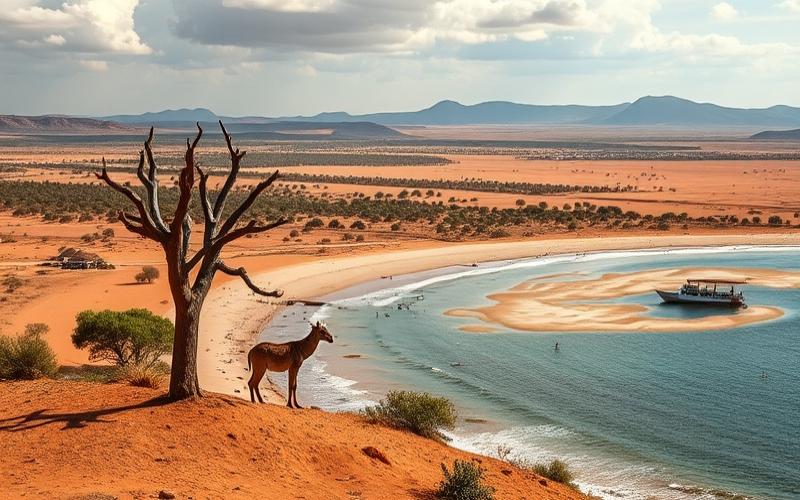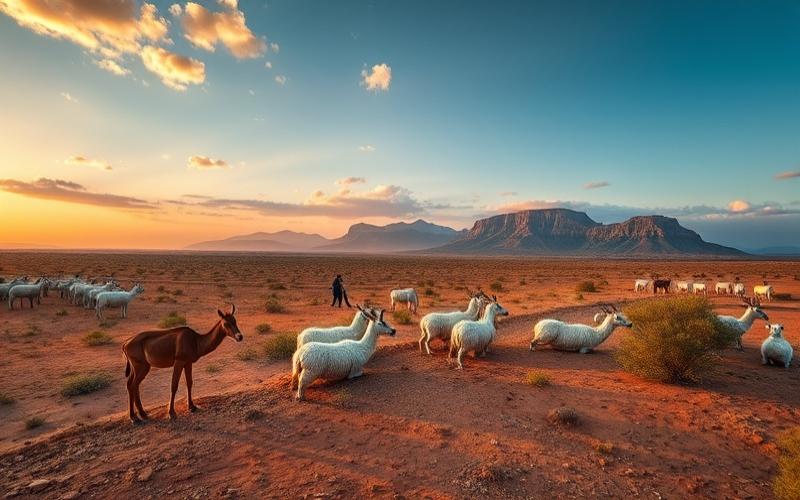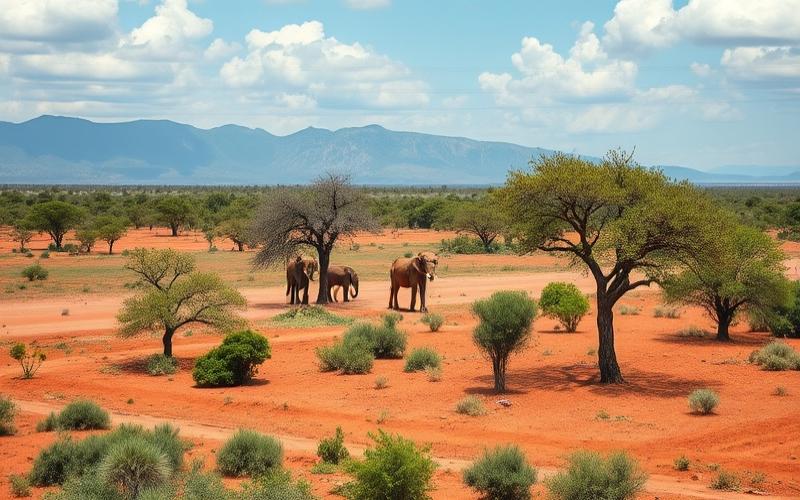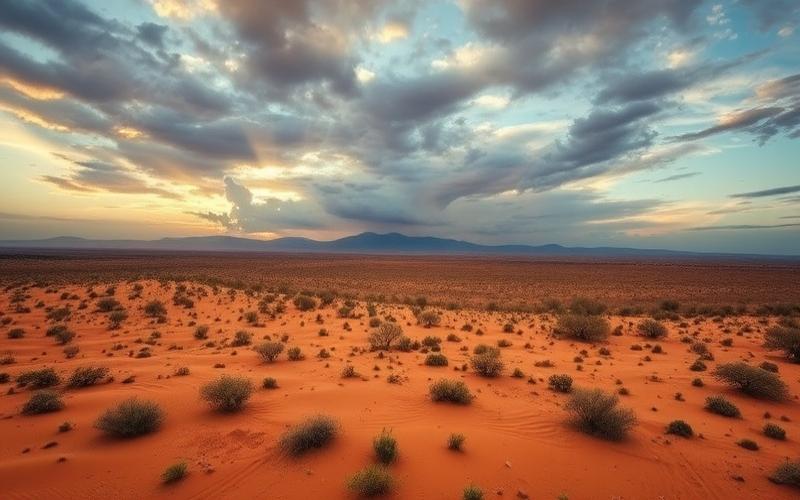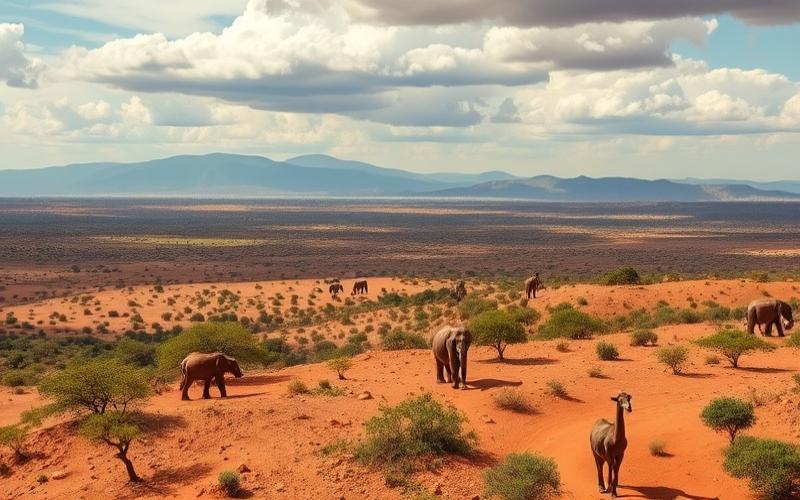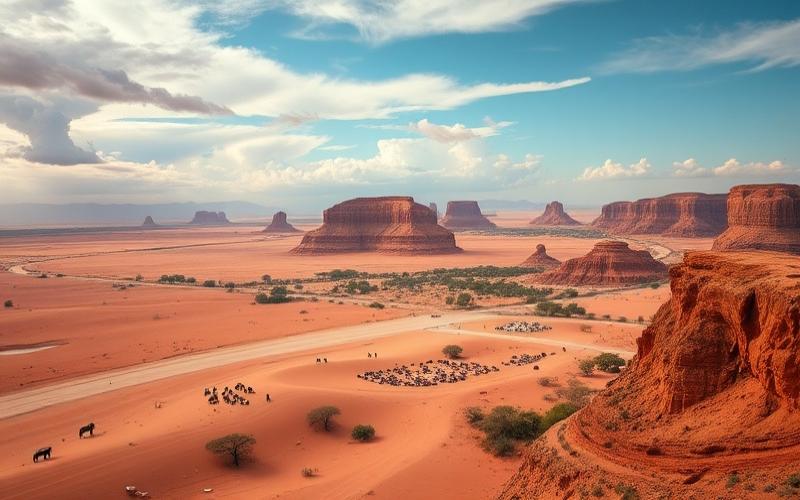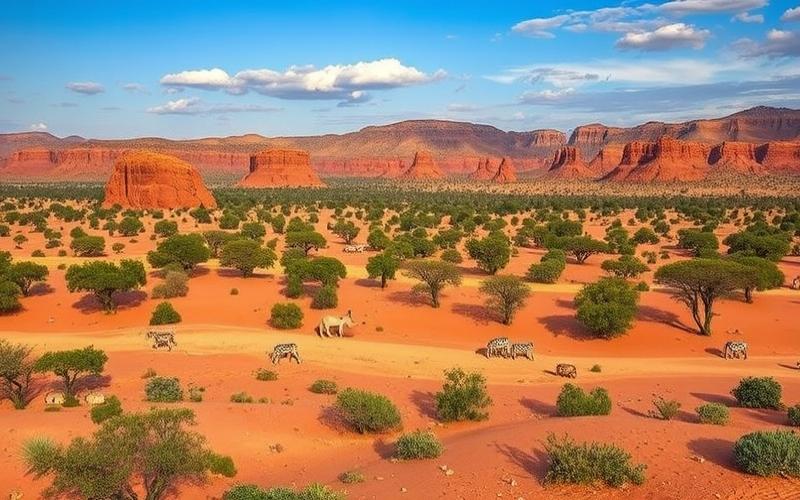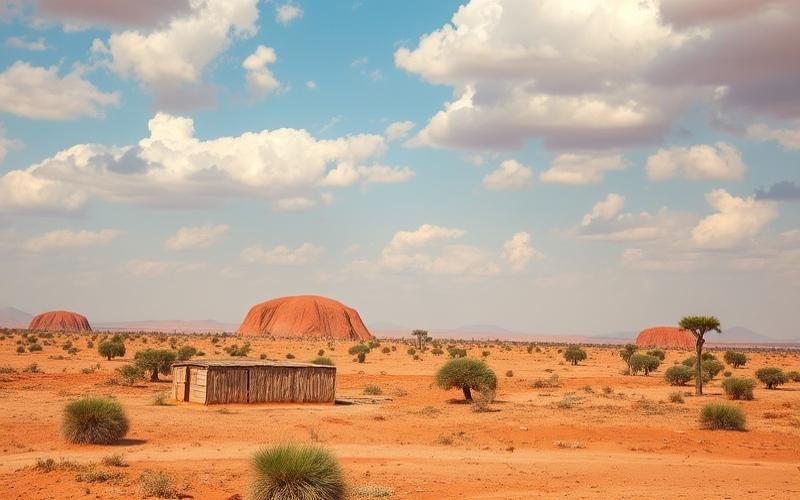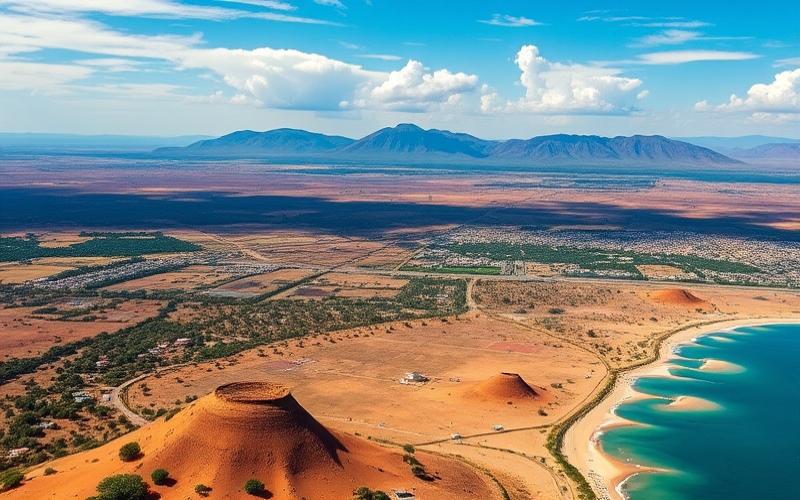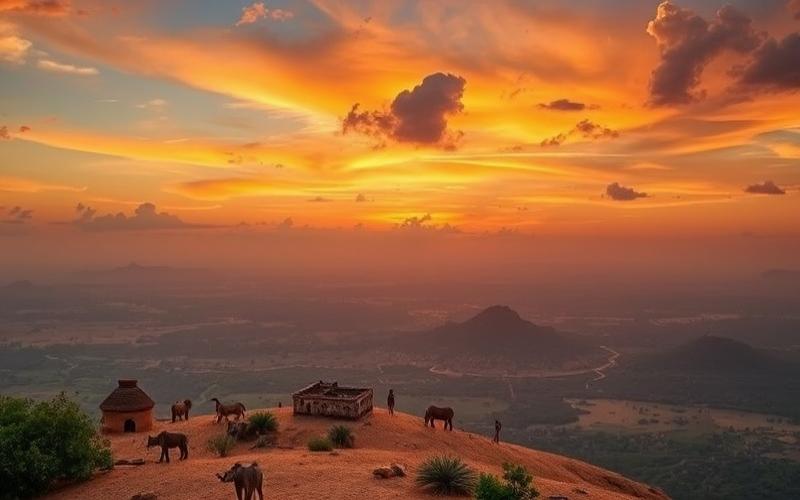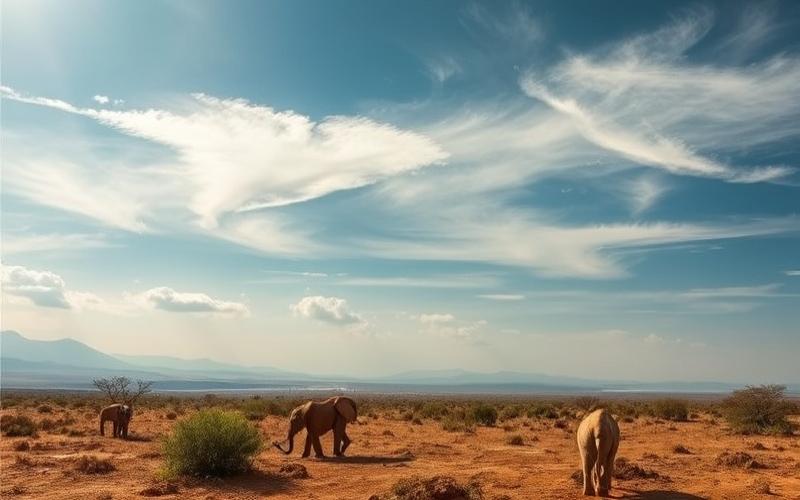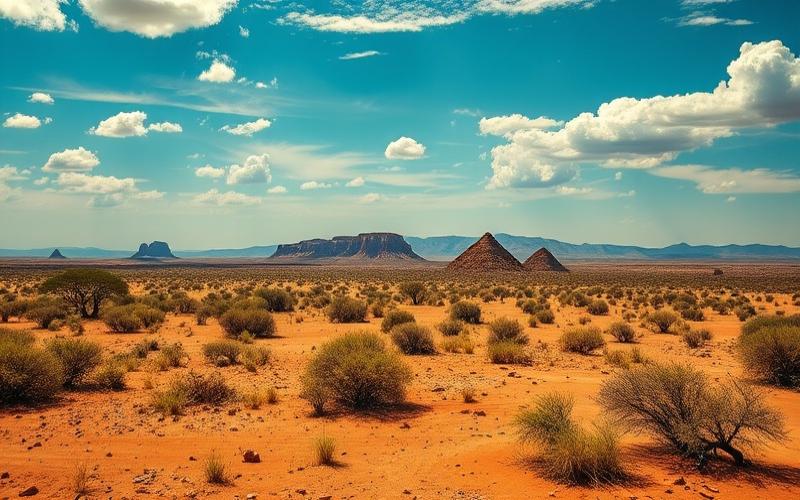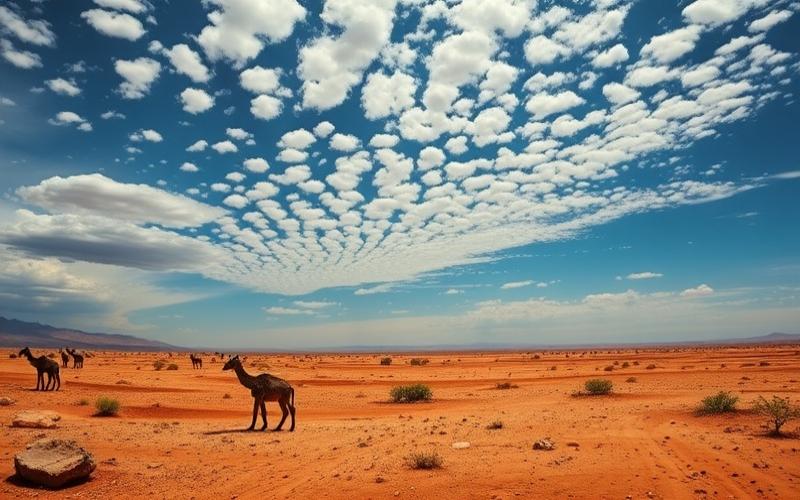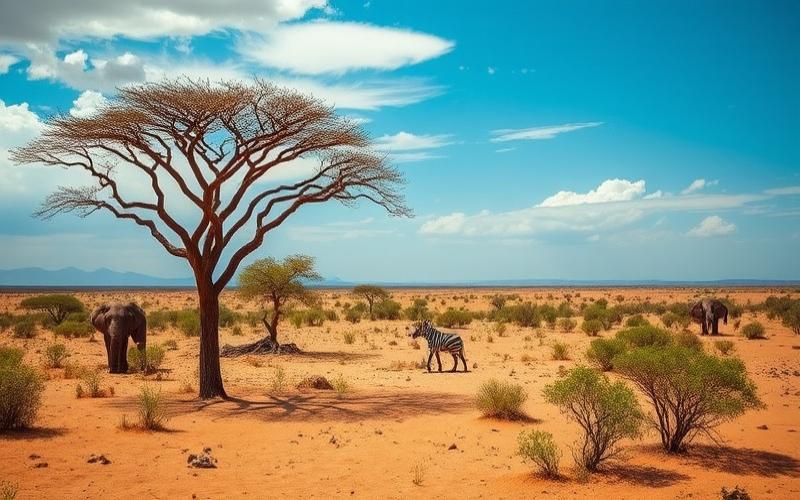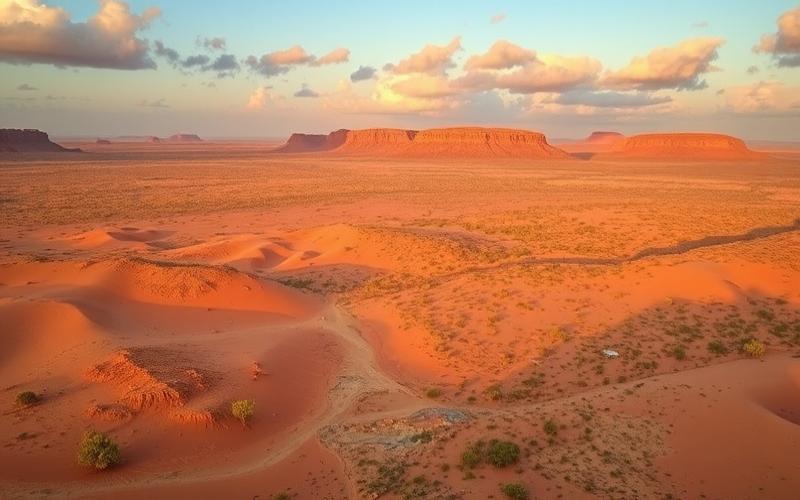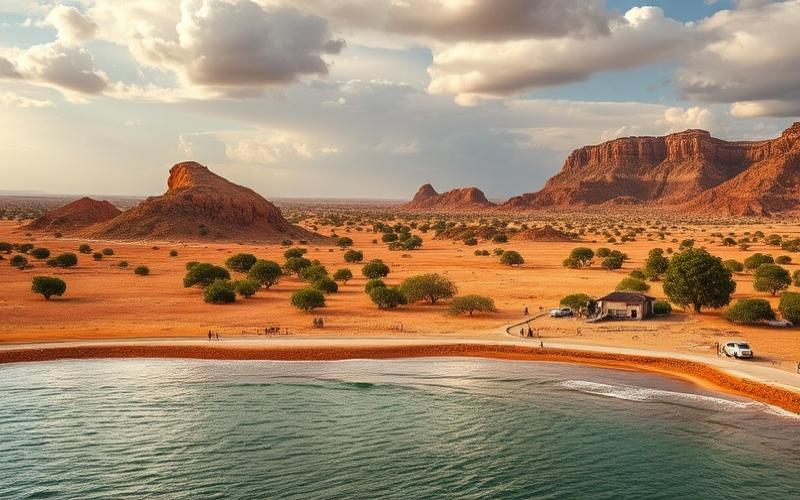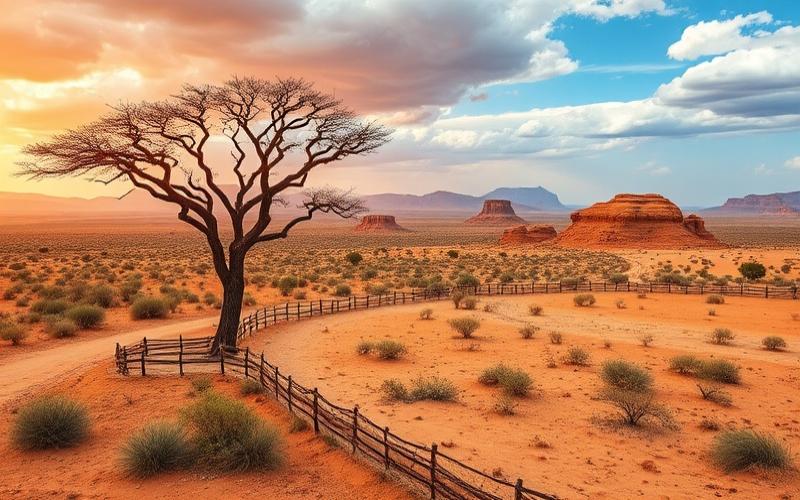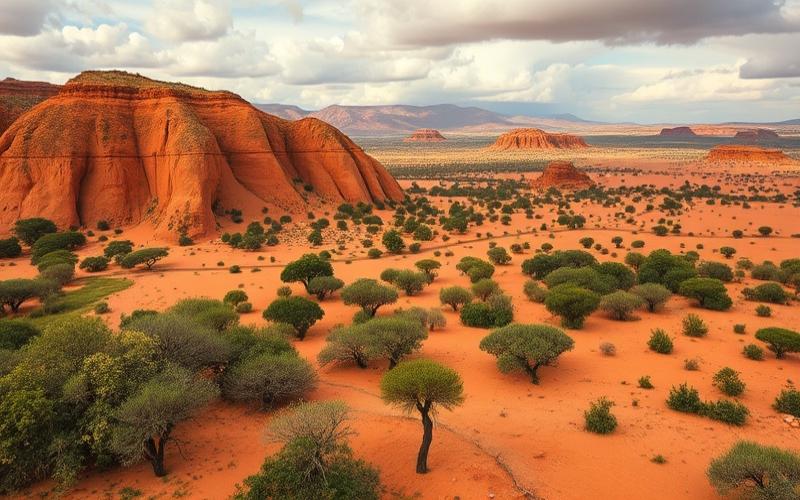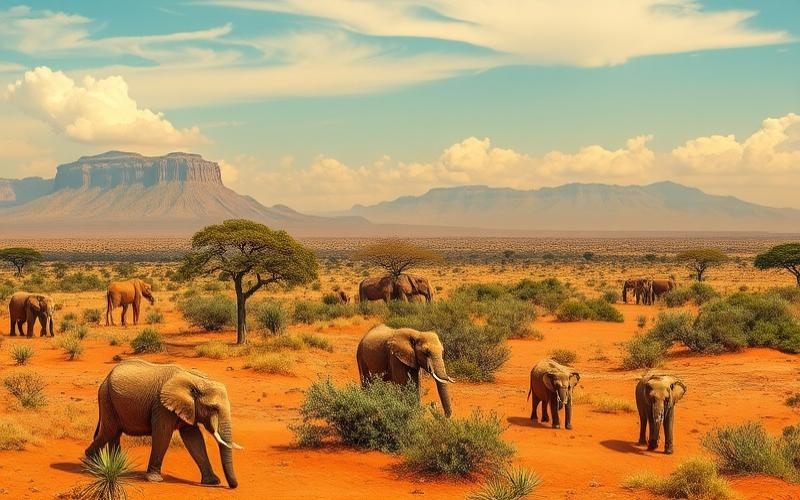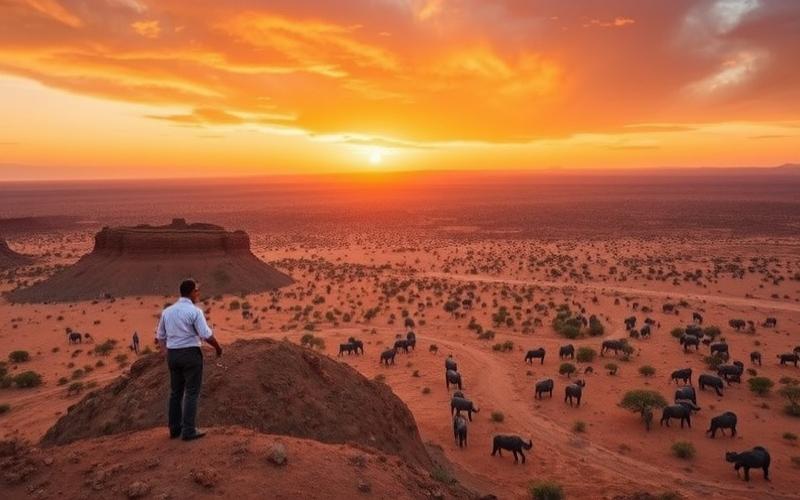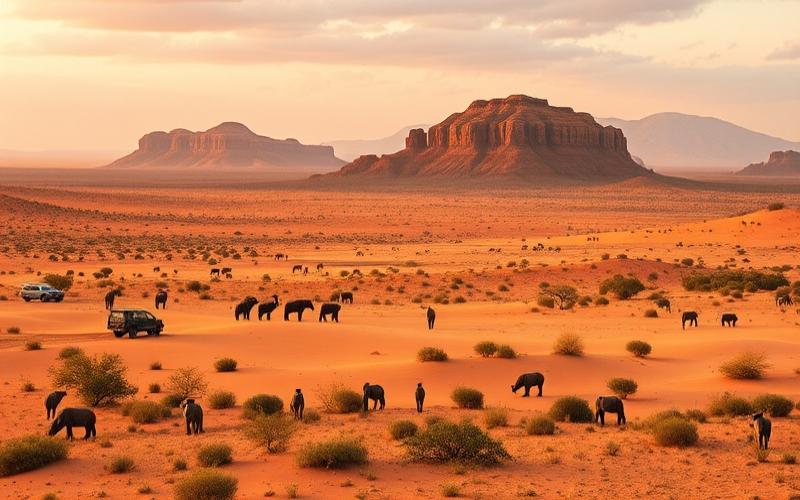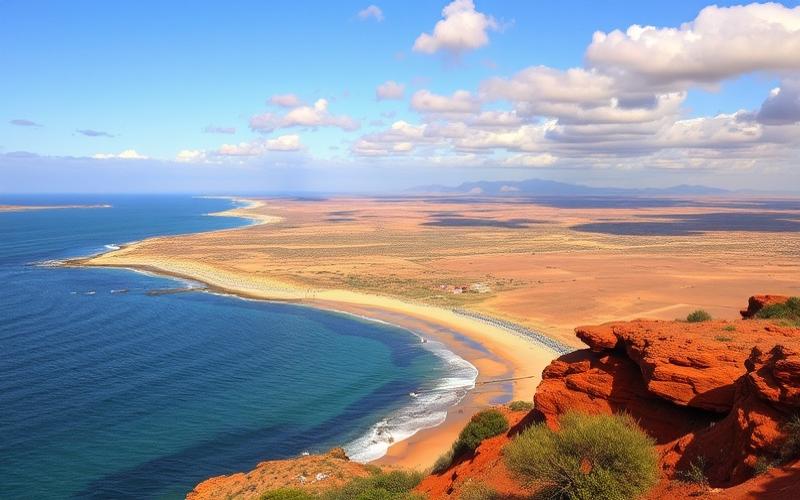
 Published on and written by Cyril Jarnias
Published on and written by Cyril Jarnias
A land of contrasts and diversity, South Africa is a country rich in history, marked by struggles and triumphs that have shaped its contemporary identity. From the emergence of the first Khoisan peoples through the complex colonial dynamics of the Dutch and British, to the painful period of apartheid and the rise of iconic figures like Nelson Mandela, South African history is a melting pot of events that continue to resonate worldwide.
Today, this vibrant nation is reinventing itself, seeking to reconcile its past with aspirations for a harmonious and prosperous future. To delve into this fascinating history is to discover the roots of the resilience and cultural diversity that define this unique nation.
The Origins of Southern Africa: A Millennia-Long History
The earliest human settlements in Southern Africa date back over a million years, with traces attributable to Homo erectus and later Homo sapiens. Major archaeological sites like Bushman Rock Shelter and Diepkloof reveal continuous occupation for at least 120,000 years, illustrating technical evolution (sophisticated stone tools, use of fire for rock processing) and cultural development (early symbolic expressions such as beads or engraved patterns).
Major Archaeological Discoveries:
- Bushman Rock Shelter (South Africa): pressure-flaked tools dating back 100,000 years.
- Heuningneskrans: stratified sequences spanning over 120,000 years.
- Matobo Hills and Murewa (Zimbabwe): rock art depicting the daily life of San hunter-gatherers.
Role of the San and Khoikhoi:
The San, nomadic hunter-gatherers present since prehistoric times, are renowned for their exceptional rock art documenting beliefs, extinct wildlife, and social organization.
The Khoikhoi, pastoralists who arrived about two millennia ago in southwestern Southern Africa, introduced cattle and sheep herding—a major innovation in a region previously dominated by gathering and hunting.
Interactions Between Indigenous Peoples & Environment:
Geological evolution—alternating wet and dry periods linked to Plio-Pleistocene climate cycles—profoundly influenced human migrations. Ecological diversity (grassy savannah vs. arid zones) fostered cultural adaptation:
- Technological adaptation to local resources.
- Development of exchange networks among mobile groups.
San societies sustainably exploited a wide ecological spectrum through their deep knowledge of the environment. The Khoikhoi adapted their seasonal movements based on forage availability for their herds.
Impacts on Local Cultural Development:
Early technical innovations observed in African lithic industries reflect marked creativity. Rock art serves as a strong identity marker that has endured through centuries.
Prolonged coexistence between San hunter-gatherers and Khoikhoi pastoralists led to cultural exchanges but also occasional tensions over access to pastoral or territorial resources.
Later Migrations Before European Arrival:
| Period | Migrant Population | Major Contributions |
|---|---|---|
| Around -2000 | Khoikhoi | Cattle/sheep herding |
| From -500/-300 | Bantu | Cereal agriculture / iron metallurgy |
The Bantu expansion—a migratory wave from Central Africa—transformed the region around the first millennium CE through:
- Mass introduction of staple crops (sorghum/millet),
- Iron metallurgy,
- Establishment of the first stable villages that sometimes coexisted with indigenous Khoisan groups.
These complex dynamics gradually led to local political structuring; a prime example: the Mapungubwe Kingdom in the 13th century near the Limpopo—the first known proto-state urban center in Southern Africa before medieval Zimbabwe.
Summary:
The multi-millennial human origins of Southern Africa are based on continuous interaction between indigenous cultural innovations (San/Khoikhoi), environmental adaptations to climatic/ecological changes, external contributions via Bantu migrations, and later European influences. This rich history still structures many contemporary South African identities today.
Good to Know:
Archaeological discoveries, like the Cederberg rock art, testify to the rich history of the first San and Khoikhoi inhabitants, whose interactions with their environment profoundly influenced local cultures long before Bantu migrations and European arrival.
Journey Through the Ages: From the Cape to the Rainbow Nation
Key Periods and Major Transformations in South Africa
| Period | Economic Dynamics | Cultural Dynamics | Political Dynamics | Key Figures/Movements | International/Regional Context |
|---|---|---|---|---|---|
| Prehistory and Indigenous Societies | Agriculture, herding, craftsmanship | Linguistic diversity (Khoisan, Bantu) | Local chiefdoms and kingdoms | Zulu, Xhosa, Sotho chiefs | Bantu migrations, regional contacts |
| European Arrival (1488-1652) | Start of maritime trade, slave trade | Encounter between local and European cultures | Establishment of Dutch outpost at the Cape | Jan van Riebeeck | European colonial competition |
| Dutch Colonization (1652-1795) | Plantation agriculture, slavery | Linguistic blending (Afrikaans) | Domination by Dutch East India Company (VOC) | Dutch governors, Asian and African slaves | Atlantic slave trade, regional wars |
| British Colonization (1795-1910) | Industrialization (gold/diamond mines), railways | Introduction of English, evangelization | Anglo-Boer Wars, annexation of territories | Shaka Zulu, Paul Kruger, Cecil Rhodes | Colonial expansion, gold rush |
| South African Union and Segregation (1910-1948) | Industrial growth, mining exploitation | Urbanization, spatial segregation | Segregationist laws, creation of ANC (1912) | Gandhi (Indian resistance), ANC leaders | World War I, imperialism |
| Apartheid (1948-1994) | Separate development, economy under sanctions | Resistance culture, censorship | White authoritarian regime, bantustans | Nelson Mandela, Steve Biko, Desmond Tutu, trade union and student movements | Cold War, embargo, international support for ANC |
| Democratic Transition and Rainbow Nation (1994 to present) | Economic reforms, openness, persistent inequalities | Promotion of multiculturalism, reconciliation | Progressive Constitution, Truth and Reconciliation Commission | Nelson Mandela, Thabo Mbeki, contemporary figures | Regional integration (SADC), new global role |
Major Social Transformations and Intercommunity Interactions
- Colonization and Slavery: Settlement of European populations, introduction of slavery, marginalization and displacement of indigenous peoples.
- Internal Migrations and Resistance: Zulu Wars, Boer Great Trek, clashes between settlers and native populations.
- Segregation and Racial Laws: Limitation of land rights, segregated urbanization, emergence of reserved neighborhoods, social fragmentation.
- Struggle Against Apartheid: Mobilization of various communities (Black, Indian, Colored), international alliances, sabotage actions, civil disobedience campaigns.
- Reconciliation and Multiculturalism: Implementation of equality policies, recognition of 11 official languages, promotion of cultural diversity.
Role of Historical Figures and Resistance Movements
- Nelson Mandela: Symbol of the anti-apartheid struggle, first Black president, architect of national reconciliation.
- Desmond Tutu: Religious leader, chair of the Truth and Reconciliation Commission.
- Steve Biko: Promoter of Black Consciousness, died in detention.
- African National Congress (ANC): Main resistance movement, organizer of political and armed struggles.
- Other Movements: South African Communist Party, trade unions, student movements.
Influence of International and Regional Contexts
- Colonization: European rivalries, importation of colonial models.
- Apartheid: Pressure from international community, economic sanctions, support for liberation movements by neighboring African countries.
- Democratic Transition: End of Cold War, shifting international power dynamics, United Nations support.
Interactions Between Ethnic and Cultural Communities
- Conflicts and Alliances: Between Dutch settlers, British, African peoples, Indians, Coloreds.
- Formation of Hybrid Identities: Creation of Afrikaans culture, linguistic and culinary blending.
- Toward National Unity: Promotion of the “Rainbow Nation,” celebration of differences, but persistence of social and economic tensions.
Contemporary South Africa: a country marked by the scars of colonization and apartheid, but also by a dynamic of transformation, openness, and celebration of cultural diversity.
Good to Know:
The role of the Khoisan, the Cape’s first inhabitants, is often overlooked but was essential in early cultural exchanges with Europeans. Did you know Nelson Mandela used mediation techniques drawn from Zulu traditions to promote post-apartheid national reconciliation?
Colonization and Independence: Legacies and Revolutions
History of Colonization in South Africa
The first colonial powers to influence South Africa were the Dutch followed by the British.
| Colonial Power | Period of Influence | Main Impacts |
| Dutch | 1652 – early 19th century | Foundation of Cape Town, arrival of Boers, slavery, initial conflicts with indigenous peoples |
| British | Early 19th century – 1961 | Abolition of slavery, imposition of English, Anglo-Boer Wars, South African Union, institutionalized racial segregation |
Social, Economic, and Cultural Impacts
- Dutch (Boers):
- Creation of the Cape Colony in 1652, established by the Dutch East India Company.
- Implementation of plantation economy, introduction of slavery, and appropriation of indigenous lands.
- Cultural blending between Dutch, French Huguenots, Germans, and slaves brought from Asia and Africa.
- Development of a strong Afrikaner (Boer) identity, with the Afrikaans language.
- British:
- Takeover of the Cape Colony in 1806, formalized in 1814.
- Abolition of slavery in 1833, which disrupted the Boer economy and heightened tensions.
- Introduction of English as official language, marginalizing Afrikaans.
- Discovery of gold and diamonds, triggering economic boom and resource rush.
- Strengthening of racial segregation policies and dispossession of indigenous lands.
Resistance Movements and Rise of National Consciousness
- Khoi, San, Xhosa, Zulu and other Bantu groups mounted armed and cultural resistance from the beginning of colonization.
- The Boers themselves resisted British domination during the two Anglo-Boer Wars (1880-1881 and 1899-1902).
- Creation of Afrikaner political networks (e.g., Afrikaner Bond) to defend their interests against British power.
- In the 20th century, emergence of African political movements, including the African National Congress (ANC) founded in 1912, to fight racial discrimination and demand equality.
Struggle for Equality, Revolutions and Transition to Democracy
- Implementation of apartheid in 1948: legal system of racial segregation and institutionalized discrimination imposed by the Afrikaner National Party.
- Proliferation of racist laws: prohibition of mixed marriages, pass laws, forced removals, creation of townships.
- Resistance led by iconic figures:
- Nelson Mandela: ANC leader, imprisoned for 27 years for anti-apartheid activities.
- Desmond Tutu: Archbishop and activist for social justice.
- Steve Biko: founder of the Black Consciousness Movement, died in detention.
- Landmark events:
- Sharpeville Massacre (1960): bloody repression of a peaceful protest against pass laws.
- Soweto Uprising (1976): student revolt against imposition of Afrikaans in schools, violently suppressed.
- Release of Nelson Mandela (1990) and negotiations leading to the end of apartheid.
- First multiracial democratic elections (1994): election of Nelson Mandela as president.
Challenges and Legacies of Colonization and the Struggle for Independence
- Persistent inequalities in access to education, employment, and land.
- Painful memory of forced removals, apartheid violence, and racial discrimination.
- Challenges of national reconciliation and building an inclusive society, symbolized by the Truth and Reconciliation Commission.
- Rich and blended cultural heritage, combining European, African, and Asian languages, religions, and traditions.
South African history is marked by the clash of colonial powers, resistance of indigenous peoples, persistence of racial injustice, and the strength of freedom movements, whose impact continues to shape contemporary society.
Good to Know:
Colonization by the Dutch (Boers) and British profoundly marked South Africa, shaping inequitable economic and social structures that fueled indigenous resistance, leading to emblematic movements such as the ANC under the figure of Nelson Mandela, playing a key role in the struggle against apartheid and the country’s democratic transition. The legacy of these eras still manifests today in persistent inequalities and ongoing efforts to reform South Africa’s socio-economic landscape.
Disclaimer: The information provided on this website is for informational purposes only and does not constitute financial, legal, or professional advice. We encourage you to consult qualified experts before making any investment, real estate, or expatriation decisions. Although we strive to maintain up-to-date and accurate information, we do not guarantee the completeness, accuracy, or timeliness of the proposed content. As investment and expatriation involve risks, we disclaim any liability for potential losses or damages arising from the use of this site. Your use of this site confirms your acceptance of these terms and your understanding of the associated risks.



